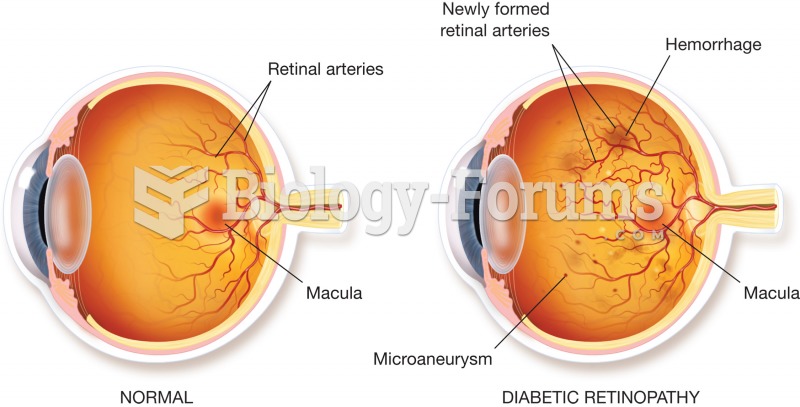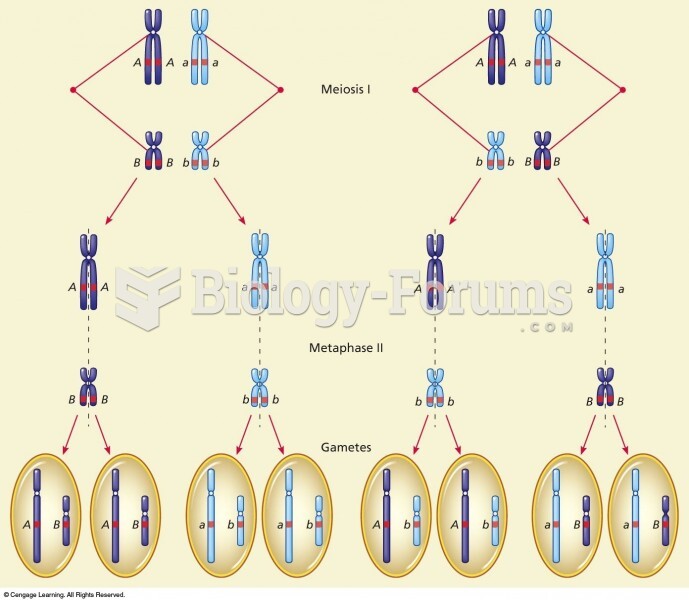|
|
|
Eating carrots will improve your eyesight. Carrots are high in vitamin A (retinol), which is essential for good vision. It can also be found in milk, cheese, egg yolks, and liver.
Stroke kills people from all ethnic backgrounds, but the people at highest risk for fatal strokes are: black men, black women, Asian men, white men, and white women.
Cytomegalovirus affects nearly the same amount of newborns every year as Down syndrome.
Oliver Wendell Holmes is credited with introducing the words "anesthesia" and "anesthetic" into the English language in 1846.
A good example of polar molecules can be understood when trying to make a cake. If water and oil are required, they will not mix together. If you put them into a measuring cup, the oil will rise to the top while the water remains on the bottom.
 Retinopathy. Illustration of a normal retina (left) and a diseased retina (right). The diseased reti
Retinopathy. Illustration of a normal retina (left) and a diseased retina (right). The diseased reti
 Behavior modification has been useful in raising the amount of social responding by children with ...
Behavior modification has been useful in raising the amount of social responding by children with ...





